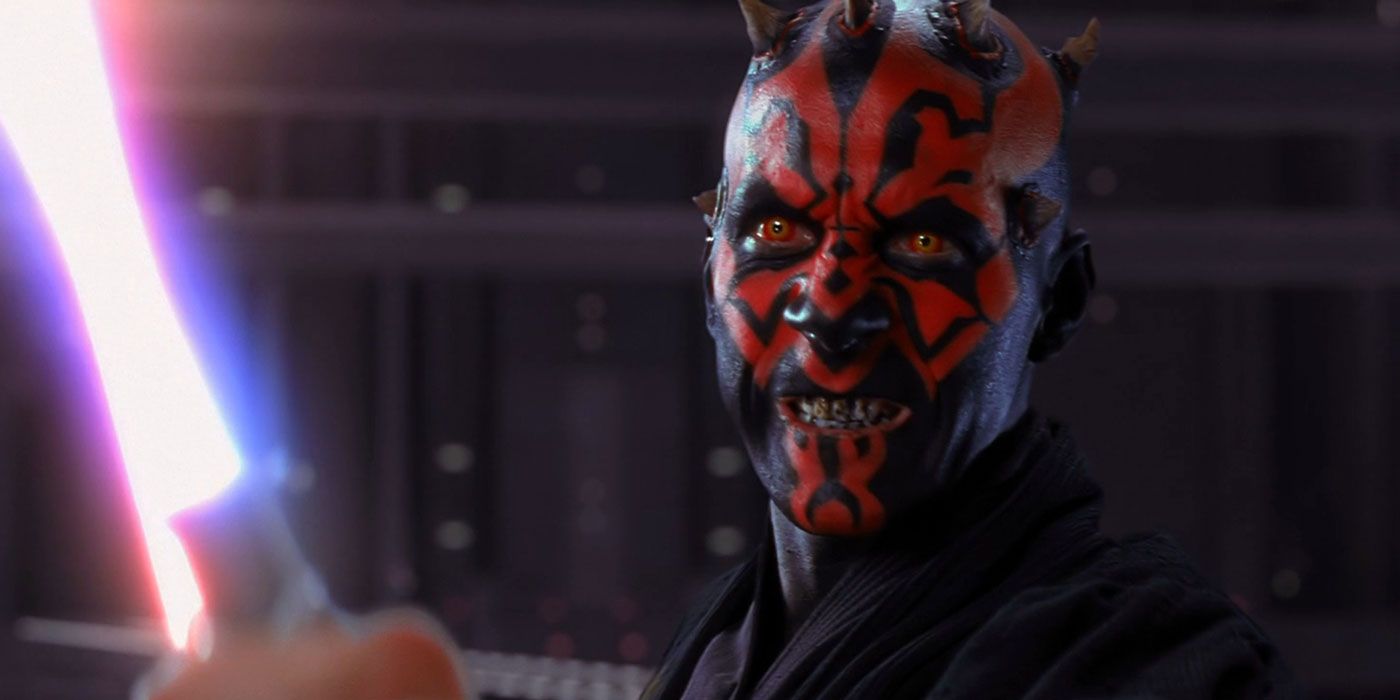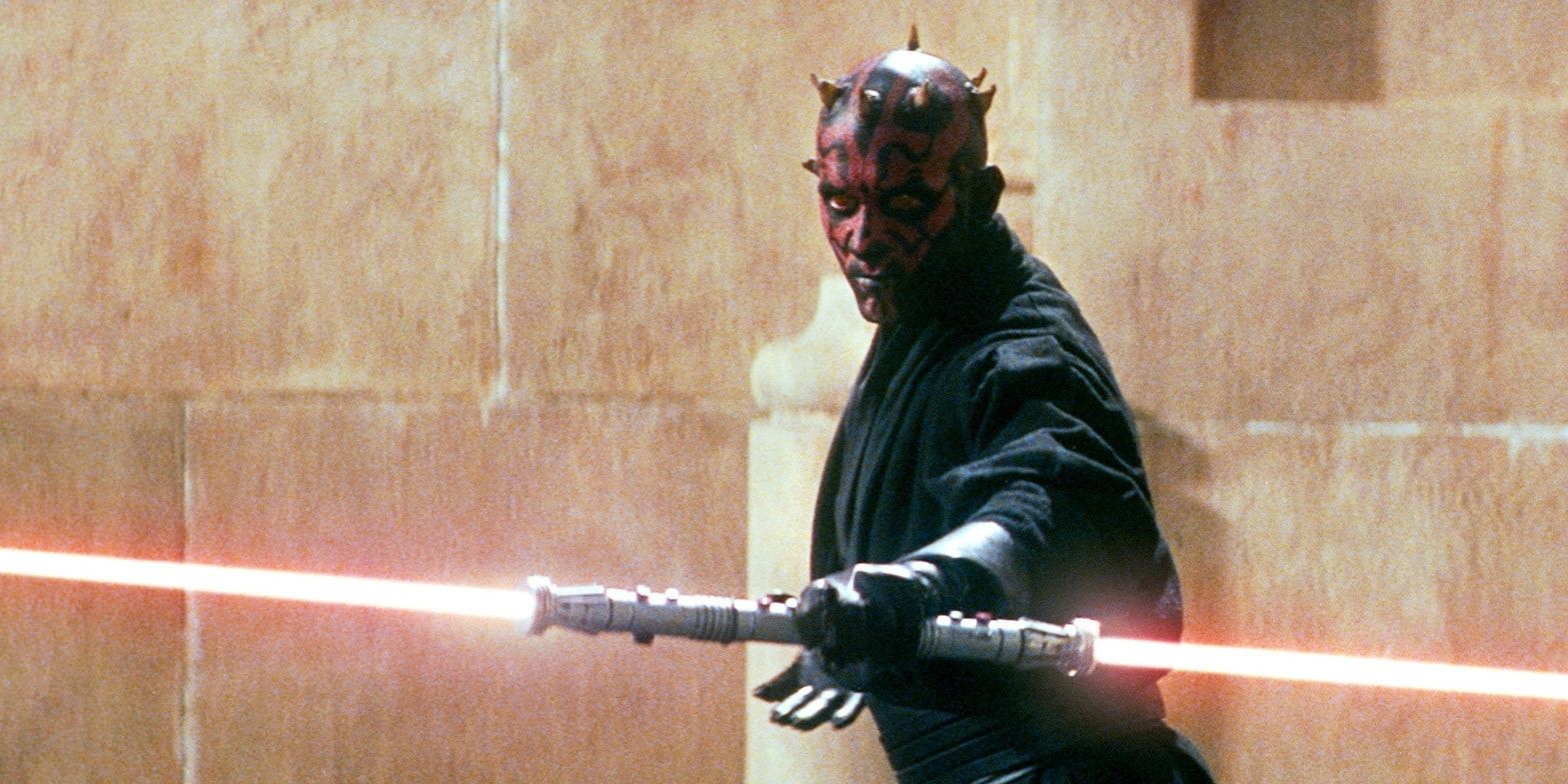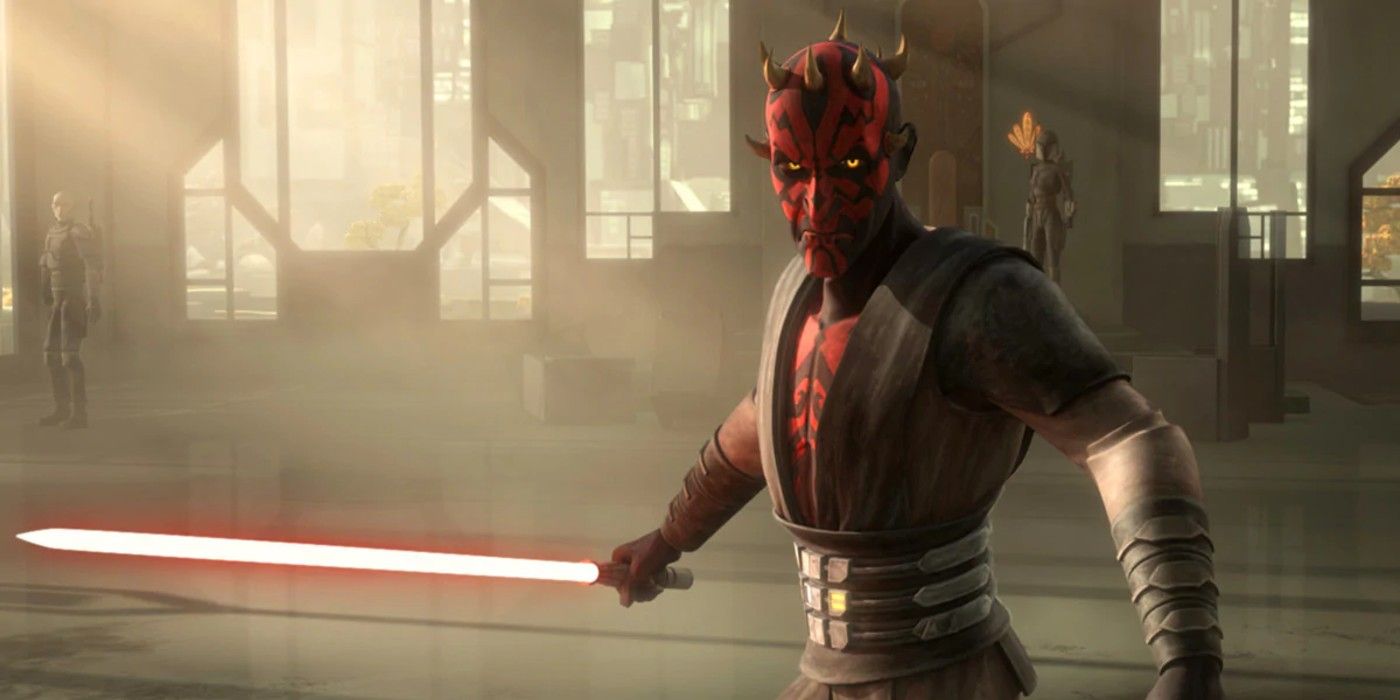On November 20th, 1998 Lucasfilm and 20th Century Fox released the first teaser trailer for Star Wars: Episode I - The Phantom Menace, and there were two moments that incited chills in fans across the world. The first was when the then-unknown Qui-Gon Jinn introduces Anakin Skywalker to Obi-Wan Kenobi, and the second was when a black-robed figure with a horned face of pitch and scarlet ignited a double bladed crimson lightsaber.
Before the film ever graced a single theater, screen audiences were aware of this figure who would loom large in the history of Anakin Skywalker's rise and fall, a dark Sith who would come to be known as Darth Maul that was taking on two Jedi at once. And while the character has received plenty of screen time in animation in subsequent years, there are rumors of a solo series, and there are many reasons why it should happen.
Boba Fett, in all honesty, was not the titanic presence in the Original Trilogy from a narrative perspective that legitimized all of the goodwill and adoration he received from the Star Wars fanbase. Over the course of all three films, the one true Clone says a total of 27 words, unless a very charitable accommodation is made for his scream while plunging into the Sarlacc pit. None of the novels, comics, cosplay or appearance in the dubious cult classic Holiday Special had anything to do with a compelling backstory, dynamic character development or any storytelling device. Boba Fett built his empire of content on the open secret that he looked unashamedly cool.
Darth Maul is similar to Fett in a lot of meta interpretative ways because like the bounty hunter, Maul's verbal contribution to the cinematic Skywalker Saga is also minuscule. The Sith apprentice has a daunting 31 words of dialogue before Obi-Wan releases his waist from the responsibility of supporting his torso, and the audience has no expositional information about him at the time of his death. It is only at Qui-Gonn's funeral that the Rule of Two is revealed in a conversation between Jedi Masters Mace Windu and Yoda, providing context and adding a dimension of posthumous dread to the apprentice. He was chosen by a master, and as revealed in the novelization of the film, Sidious was absolutely confident that there were no two Jedi, with perhaps the ranking heads of the council as the only exception, that could have stood against his Dark Side.
Though they share a brotherhood as almost mute enforcers of the badass aesthetic, Fett and Maul couldn't be more dissimilar as far as their role within the greater arc of lore at the time of their cinematic debut. Darth Maul killed a Jedi on screen for the first time and would have had a pair of trophies for his wall had he not foolishly tormented Padawan Kenobi before permanently dispatching him. Obi-Wan's surrender to the Force while fighting Vader in A New Hope was no more a depiction of a Jedi's murder than Luke's paltry measures at aiding his sister by sending his Force hologram to delay Kylo Ren was in The Last Jedi, though the end result was death for both.
Maul was also the forebear of an athletically gifted lightsaber martial arts style that remains unique to him but paved the way for other tumbling blade masters to appear on film. His impact is felt in every new lightsaber variation from the spinning blades of the Inquisitors and Grievous to the ragged unstable hilts of Kylo Ren. Both Maul and Fett were also resurrected through the necromancy of Star Wars zealotry, and if the son of Jango could parley that into a lucrative television deal, then it would be peak nerd culture injustice not to offer the son of Dathomir the same.
The Son of Dathomir is a canonical story from the comics that was adapted from a canceled arc of episodes from Star Wars: The Clone Wars. After Maul's defeat at the hands of Sidious in Season 5, Episode 16 "The Lawless," he is taken into custody but allowed to escape so that he can lead Sidious to Maul's mother, the powerful witch Mother Talzin, matron and archmage of the Nightsisters. With a remnant of his criminal empire intact, Maul and his mother unite to strike against Sidious and the Separatists and succeed in detaining General Grievous and possessing Count Dooku.
A climactic battle ensues that includes lightsabers, lightning and magic duels between the likes of Obi-Wan Kenobi, Mace Windu, Mother Talzin, Darth Sidious, Grievous, Dooku and Maul that results in the sacrificial death of Talzin to allow for Maul's escape. Audiences were robbed of seeing the aforementioned events animated due to the series cancellation before it found its eventual home on Netflix and then finally on Disney+. Eight years later, and there remains no doubt that this clash of opponents would set a totem in time as one of the most iconic confrontations in Star Wars lore, and a television series could make good on that opportunity.
After this battle, Darth Maul goes on to lead the Crimson Dawn in the years leading up to A New Hope, but there is so much of his story that remains to unveil and unpack. The time between The Clone Wars and Star Wars: Rebels depict a Maul who has surpassed some of his baser instincts and resonates with the Force on a much deeper level. His already potent skills at prophecy have greatly increased over this period of time, and he has transformed from bullying agent of vengeance and seeker of martial authority to an eccentric Dark Side mystic whose power lies in cultivating his relationship with the Force throughout the study of lost Holocrons, the nurturing of a new apprentice and being drawn to the Chosen One to understand their role in the Force.
During his final confrontation with Obi-Wan, Maul dies as a respected adversary and lingers on, not so that he may spew curses at the hatred of his life but so that he can answer questions spawned by his readings of the ripples in the Force flows that led him to Tattooine in the first place. Star Wars as a franchise has already shown a commitment to telling the granular aspects of a story, even if the audience, some could argue especially if the audience, knows how it will all end. Cassian Andor's series offers not only a recent example but also a chance at cross-pollination to the mutual benefit of both characters. Speaking on behalf of a fractured fanbase, the likes of Star Wars is a bold proposition, but it seems clear that Darth Maul has more stories to tell, and there are millions of people across the globe who are eager to see them told.



